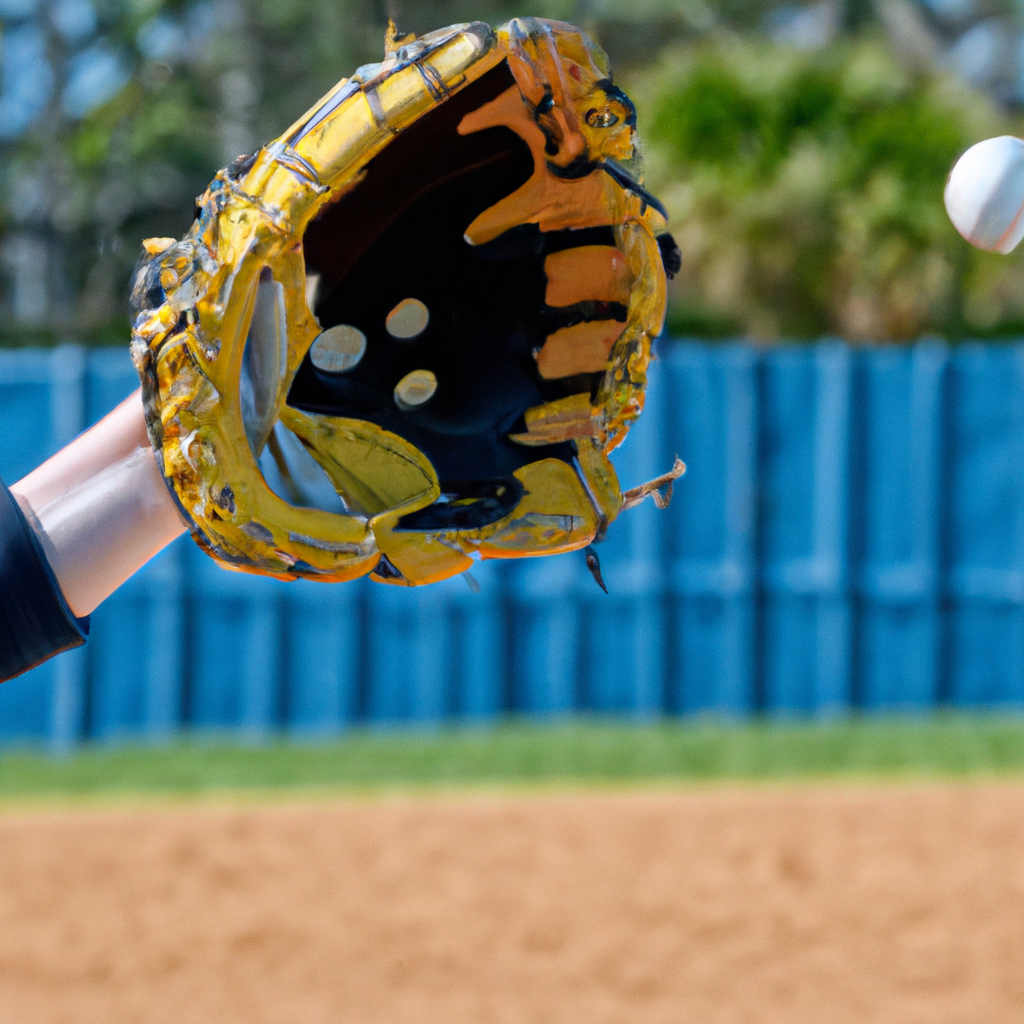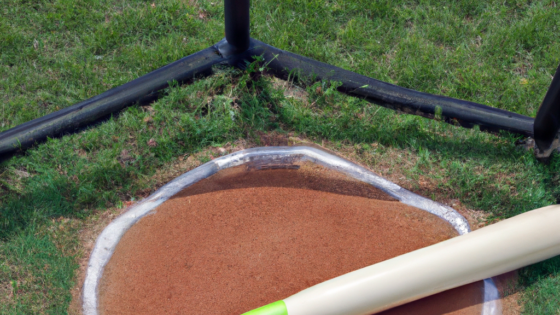Overview of the Perfect Fastball
Baseball is a game that has been enjoyed by millions around the world for over a century. One of the most important pitches in baseball is the fastball, and it is essential for pitchers to master this pitch in order to become successful at the sport. A fastball is a pitch that is thrown with maximum speed and velocity, and it can be a game-changer if used correctly. In this article, we will discuss everything you need to know about throwing a perfect fastball in baseball.
The grip
The first step in throwing a perfect fastball is gripping the ball correctly. The grip used for a fastball is called a four-seam grip. To do this, place your index and middle fingers across the top seam of the ball, with your thumb resting underneath. The ball should be held loosely in the hand to allow for a smooth release.
The wind-up
The next step is to get into the wind-up position. Start by standing on the mound, with your feet shoulder-width apart. Raise your pitching arm above your head, with the ball gripped in your hand. Your other arm should be extended out in front of you. As you begin your motion, move your weight onto your back foot, bending your knee slightly.
The delivery
As you begin your forward motion, move your weight onto your front foot. As your arm comes forward, your grip on the ball should remain loose. As your arm comes forward, your wrist should snap down, releasing the ball toward the plate. Make sure to follow through with your arm, bringing it down and across your body as you finish the pitch.
Looking for signs of success
To determine if you have thrown a perfect fastball, there are a few things to look for. First, the ball should travel in a straight line toward the plate. Second, it should have a high speed and velocity. Third, there should be minimal movement or spin on the ball. If you can achieve these elements, you can accurately say that you have thrown a perfect fastball.
In conclusion, throwing a perfect fastball is essential for any pitcher in baseball. By mastering the grip, wind-up, and delivery, you can help your team win games and become a successful pitcher. Remember to keep practicing, and have fun on the field. Stay tuned for the next section in our series, where we will discuss how to throw a slider pitch in baseball.
The Basic Fundamentals of Throwing a Fastball
Section 2: The Basic Fundamentals of Throwing a Fastball
A fastball is one of the most important pitches in baseball. It is the pitch that every pitcher must master in order to be successful. A good fastball can make the difference between winning and losing a game. In this section, we will discuss the basic fundamentals of throwing a fastball.
Grip
The first thing that you need to know when throwing a fastball is how to grip the ball. There are two common ways to grip a fastball, the four-seam grip and the two-seam grip. The four-seam grip involves holding the ball with your index and middle fingers across the narrowest part of the seams, and your thumb underneath the ball. The two-seam grip involves placing your index and middle fingers on or just inside the seams, and your thumb underneath the ball.
Wind-up
Once you have your grip, it’s time to start your wind-up. In order to throw a fastball, you must first step back with your non-throwing foot, then turn your body sideways to the mound. As you lift your throwing arm, bring your other hand up to your chest. As your throwing arm begins forward motion, your non-throwing hand should move down and away from your body.
Release
As you release the ball, you should aim it toward the plate with a smooth, controlled motion. Your grip and release should be consistent to ensure that each pitch is thrown in the same way. The ball should be released with a snap of the wrist and fingers at the time of delivery. This technique enhances the ball’s spin, speed and movement.
Follow-through
After releasing the ball, it’s important to follow through with your pitch. Good follow-through means that your lead leg should land in front of your body with your throwing arm following through down the opposite side of your body. Your glove should be positioned at the opposite side of your body, pointing down towards the ground.
Final Thoughts
Throwing a fastball involves mastering every step of the process. From grip to follow-through, each detail is important for success. Practice each step of the process until it becomes second nature, and remember to stay focused on your mechanics throughout the game. By mastering these basics, you’ll be throwing perfect fastballs in no time.
Advanced Techniques to Perfect your Fastball
Welcome back to our series of blog posts on advanced techniques to perfect your fastball. In the previous posts, we discussed the basics of the fastball and the grip techniques. In this post, we will focus on the mechanics and tips that can help you throw a perfect fastball in baseball.
Maintain a Straight Arm
Throwing a fastball requires you to maintain a straight arm throughout the delivery. Your arm should be perpendicular to the ground as you raise it up, keeping your elbow close to your body. As you proceed with your delivery, your arm should remain straight, and your wrist should be relaxed, with your fingers pointed upwards.
Maintain a Consistent Arm Slot
To throw a perfect fastball, maintaining a consistent arm slot is essential. Your arm slot refers to the angle and height at which you release the ball. Consistency in arm slot is critical because it affects the trajectory and release point of the ball. Maintaining a consistent arm slot will make it challenging for batters to read the pitch, giving you an edge.
Use Your Entire Body
Pitching a fastball is not about the arm alone. You must use your entire body to generate power and velocity. Start with proper leg and foot placement, which will help you create a stable base. As you begin your windup, drive off the back foot and transfer your weight forward, causing your torso to rotate. By doing this, you will generate more power and force, resulting in a faster pitch.
Follow Through
The follow-through is an essential aspect of pitching a perfect fastball. It refers to the movement of your body after you release the ball. Your follow-through should be a fluid motion, with your throwing arm extending all the way out towards home plate, making you stable and balanced. By maintaining balance and following through, you reduce the risk of injury and improve your overall pitching mechanics.
Conclusion
Throwing a perfect fastball requires a combination of techniques, mechanics, and practice. Maintaining a straight arm, consistent arm slot, using your entire body, and following through will give you an edge and help you achieve faster, more accurate pitches. Keep practicing, stay focused, and you will soon be pitching like a pro.
Correcting Common Mistakes in Throwing a Fastball
How to Throw a Perfect Fastball in Baseball
Section 4: Correcting Common Mistakes in Throwing a Fastball
As with any skill, throwing a fastball in baseball requires practice, patience, and attention to detail. While the motion of throwing a fastball may seem simple, there are many common mistakes that can sabotage your efforts to throw accurately and with speed.
Here are some common mistakes to avoid and tips for correcting them:
Mistake #1: Gripping the ball incorrectly
– Grip the ball with the tips of your fingers, not the palm of your hand
– Place your index and middle fingers across the seams of the ball, with your thumb underneath
– Make sure your grip is firm but not overly tight
Mistake #2: Not using your legs and hips
– Use your legs and hips to generate power and speed in your throw
– Shift your weight from your back foot to your front foot as you release the ball
– Rotate your hips and shoulders in sync with each other
Mistake #3: Not following through
– Extend your arm fully during the throwing motion
– Point your throwing hand towards your target after release
– Do not cut your throwing motion short or pull your arm back too quickly
Mistake #4: Improper arm angle
– Keep your throwing arm at a 90-degree angle as you bring it back and release the ball
– Do not drop your arm too low or release the ball from too high up
– Keep your elbow level with your shoulder
By avoiding these common mistakes and practicing proper technique, you can improve your fastball in baseball and potentially join the ranks of top pitchers. Remember to be patient with yourself as you learn, and seek feedback and guidance from experienced coaches or players to further refine your skills.
Exercises and Drills to Improve your Fastball
Section 5: Exercises and Drills to Improve Your Fastball
Now that we’ve covered the mechanics and techniques of throwing a fastball in baseball, let’s discuss some exercises and drills that can help you improve your fastball.
1. Long toss
Long toss is a classic exercise for building arm strength and improving your throwing distance. Start by throwing from a short distance and gradually increase the distance as you warm up. As you get comfortable throwing from a longer distance, focus on throwing with proper mechanics to maintain accuracy and velocity.
2. J-Band exercises
J-Bands are resistance bands designed specifically for baseball players. These exercises help strengthen your rotator cuff muscles and improve your arm’s durability. Focus on slow, controlled movements to ensure you’re using correct mechanics throughout each exercise.
3. Plyometric exercises
Plyometric exercises are explosive movements designed to improve power and speed. Examples include box jumps, medicine ball throws, and squat jumps. These exercises work the muscles needed for throwing fastballs, so adding them to your workout routine can help improve your fastball velocity.
4. Pitching drills
Pitching drills are essential for improving technique and accuracy. Examples include the crow hop drill, balance drill, and stride length drill. These drills help reinforce proper mechanics and build muscle memory, so you can consistently throw a powerful fastball.
5. Interval training
Interval training involves alternating periods of high-intensity exercise with periods of rest or low-intensity exercise. This type of training is helpful for building endurance and maintaining a consistent fastball velocity throughout a game. Try running sprints, cycling, or jumping rope for short bursts of high-intensity exercise, followed by periods of rest.
Conclusion
Throwing a perfect fastball in baseball takes practice, patience, and dedication. By focusing on proper mechanics, including your grip, arm slot, and follow-through, and incorporating exercises and drills, you can improve your fastball velocity, accuracy, and endurance. With time and effort, you can become a powerful pitcher that hitters fear.





